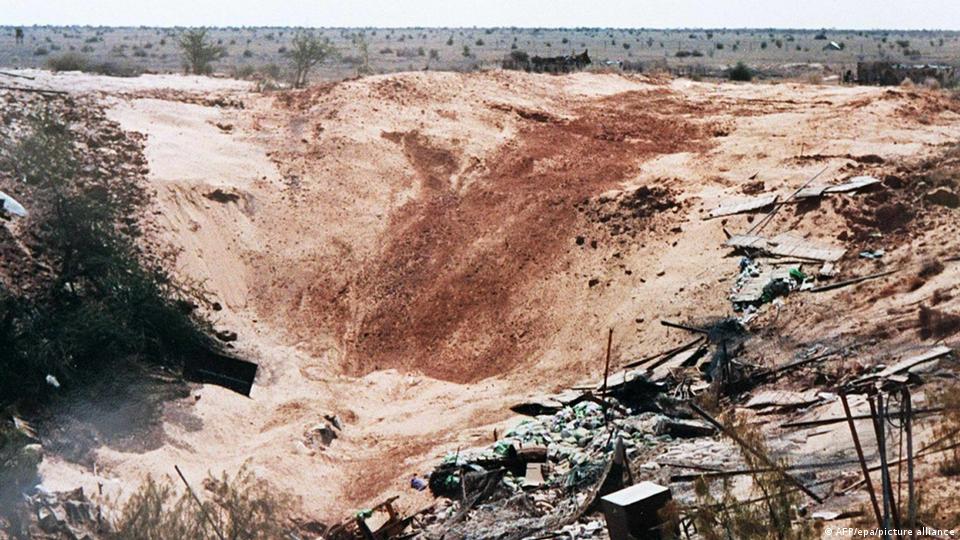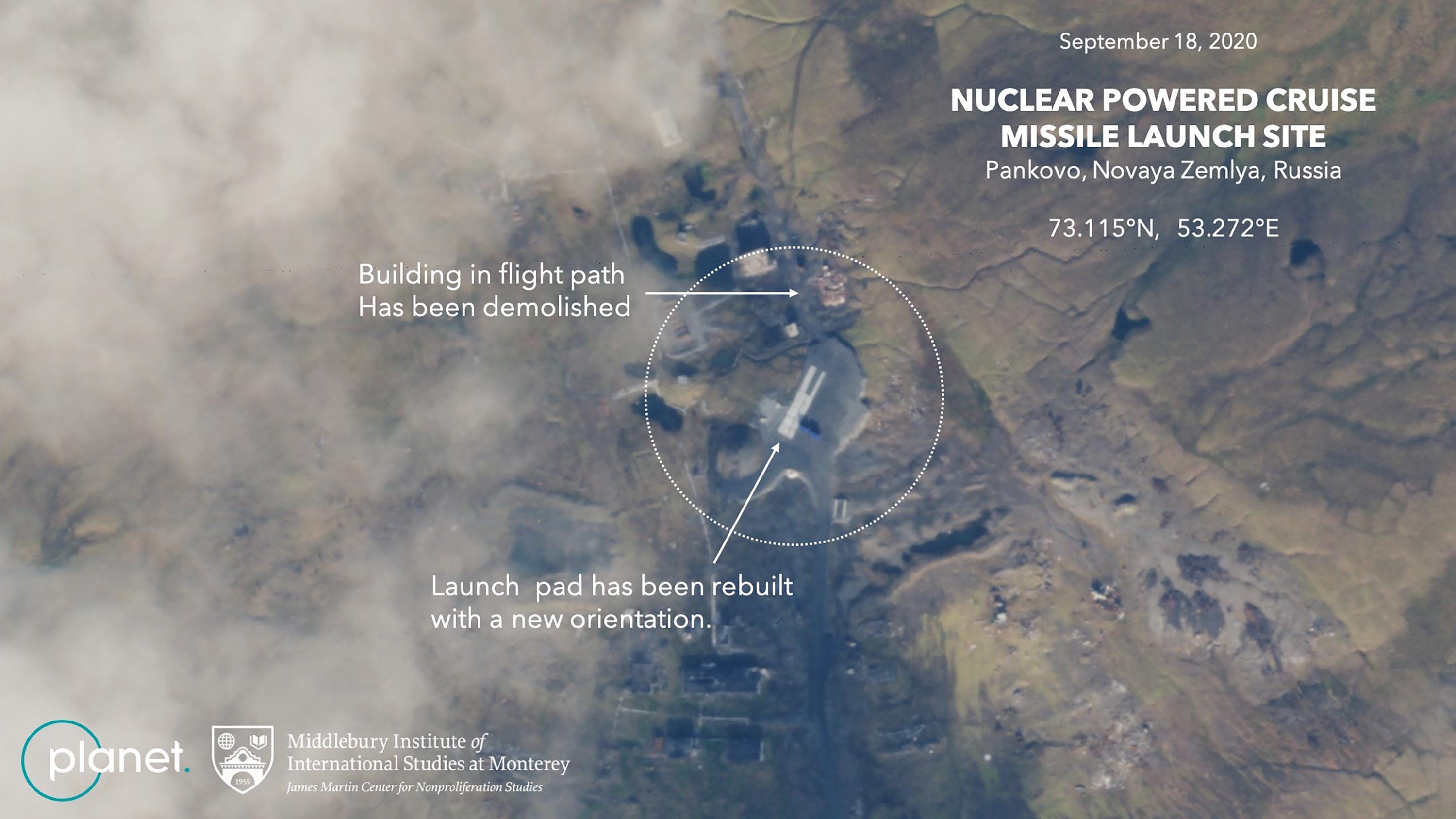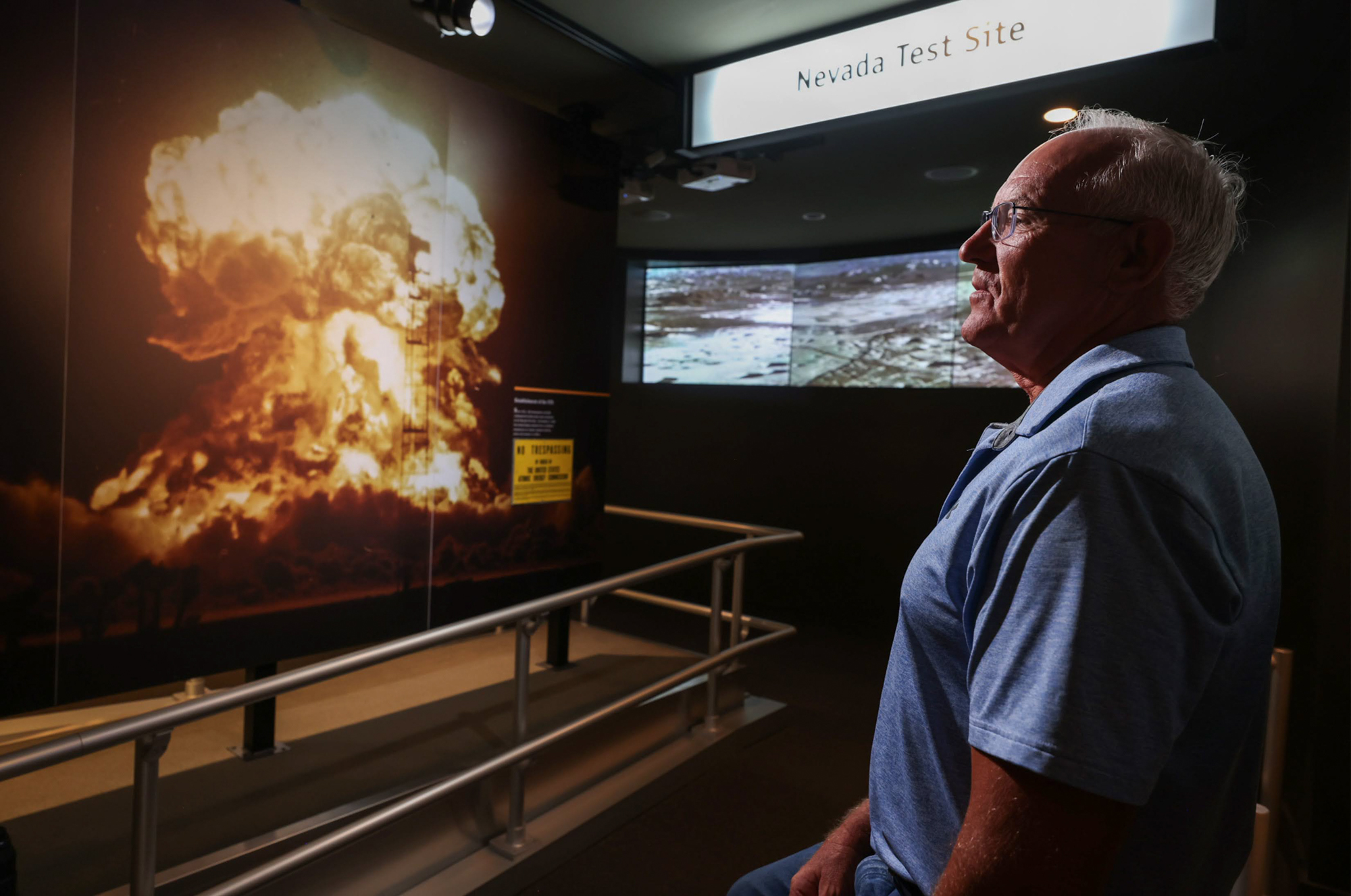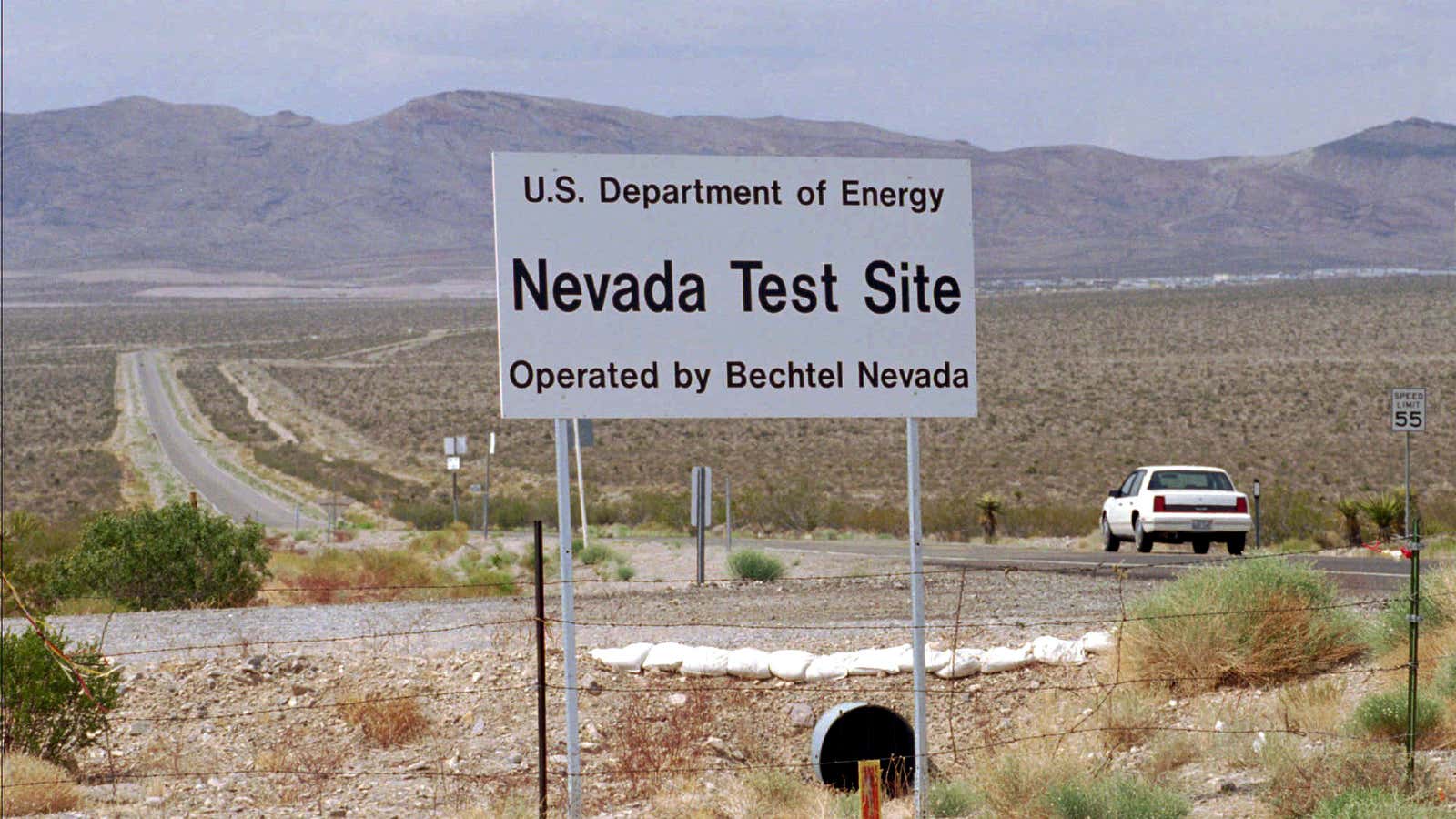Exclusive Satellite Imagery Reveals Heightened Activity At Nuclear Test Sites In Russia, China, And The United States, Signalling Increased Tensions Among These Major Nuclear Powers.
The recent resurgence of activity at nuclear test sites in Russia, China, and the United States has raised significant concerns in the global community. Satellite images revealing the expansion of these facilities have prompted questions about the intentions of these major nuclear powers. Tensions between these nations have escalated to levels not seen in decades, leading experts to contemplate the possibility of nuclear testing resuming after a long hiatus since the Comprehensive Nuclear Test Ban Treaty of 1996. So what is happening?

Heightened Activity At Nuclear Sites: Russia, China And The United States
Prominent analysts specialising in military nonproliferation have provided satellite imagery to a significant daily, suggesting that recent years have seen the construction of new facilities and tunnels at these nuclear test sites, as demonstrated by satellite images.
While there is no immediate evidence of an impending nuclear test by Russia, the U.S., or China, the images highlight significant expansions at these sites compared to just a few years ago.
These developments have taken place at three key locations: one is operated by China in Xinjiang’s remote western region, another by Russia in an Arctic Ocean archipelago, and the third in the U.S. within the Nevada desert.
The satellite imagery, spanning the past three to five years, clearly depicts new subterranean tunnels, freshly built roads and storage facilities, and an uptick in vehicular activity in and around the sites, according to Jeffrey Lewis, an adjunct professor at the James Martin Center for Nonproliferation Studies at the Middlebury Institute of International Studies.
Jeffrey Lewis stated, “There are numerous indications that suggest Russia, China, and the United States may be contemplating a return to nuclear testing,” an action none of these nations has undertaken since the Comprehensive Nuclear Test Ban Treaty of 1996 prohibited underground nuclear tests. It’s noteworthy that while China and the U.S. have signed the treaty, they have not ratified it.
Retired U.S. Air Force Colonel Cedric Leighton, a former intelligence analyst, reviewed the satellite images of the nuclear sites operated by these three nations and concurred with Lewis’s assessment. Leighton remarked, “It is evident that all three countries—Russia, China, and the United States—have invested significant resources, time, and effort not only in modernising their nuclear arsenals but also in preparing for activities that would be necessary for a test.”
Although Moscow has ratified the treaty, Russian President Vladimir Putin stated in February that he would order a test if the U.S. were to do so first, cautioning against “dangerous illusions that global strategic parity can be destroyed.”
The expansion of these test facilities runs the risk of fueling a competition to modernise nuclear weapons testing infrastructure during a period of deep-seated distrust between Washington and the two authoritarian regimes; nevertheless, and thankfully, the prospect of actual armed conflict is not considered immediate.
Jeffrey Lewis emphasised, “The threat from nuclear testing lies in its potential to further accelerate the ongoing arms race between the United States, on one side, and Russia and China, on the other. The consequences are vast expenditures without any corresponding increase in safety.”
 Nuclear Threats Amid Growing Tensions And Doomsday Clock
Nuclear Threats Amid Growing Tensions And Doomsday Clock
Jeffrey Lewis’ remarks come in the wake of alarming developments in the realm of nuclear security. Earlier this year, the renowned nuclear watchdog organisation, the Bulletin of the Atomic Scientists, reset its iconic Doomsday Clock—a symbol of how close the world is to potential catastrophe—to a mere 90 seconds to midnight, marking its most dire reading since its establishment in 1947.
The catalyst for this grave assessment, as cited by the group, is the conflict in Ukraine, ignited by Russia’s unlawful invasion of its neighbouring country in February 2022.
The Bulletin of the Atomic Scientists highlighted Russia’s thinly veiled nuclear threats as a sobering reminder that the escalation of the conflict, whether by accident, intention, or miscalculation, poses a formidable risk and the specter of the conflict spiralling beyond anyone’s control looms large.
In essence, today’s Doomsday Clock signals a higher risk to humanity’s survival than in 1953, a year marked by dramatic above-ground nuclear weapons tests conducted by both the United States and the Soviet Union.
Recently, United Nations Secretary-General António Guterres issued a fresh appeal for key nations to ratify the international treaty that prohibits experiments for both peaceful and military purposes.
Guterres voiced his concern, stating, “This year, we confront a disconcerting surge in global distrust and division. With nearly 13,000 nuclear weapons stockpiled worldwide—and nations actively enhancing their precision, range, and destructive capabilities—this situation is a recipe for devastation.”
Lewis noted that Russia’s unexpected military setbacks in Ukraine may partly motivate Moscow to contemplate a resumption of nuclear testing.
Dmitry Medvedev, a staunch supporter of Putin and the current deputy chairman of Russia’s Security Council, has issued a stark warning that Moscow “would have to resort to nuclear weapons” if the Ukrainian counteroffensive were to gain ground.
)%20LA-UR-06-1068_1-1024x819.jpg)
While Medvedev’s aggressive rhetoric has raised concerns, it is widely recognised that Putin remains Russia’s principal decision-maker and is often viewed as the true power behind the throne during Medvedev’s four-year presidency.
Furthermore, according to President Alexander Lukashenko, Belarus, a key player in Russia’s invasion of Ukraine, has acknowledged receiving tactical nuclear weapons from Moscow. He further stated that Minsk would be prepared to employ these weapons in response to foreign “aggression.”

Russia
While the Russian military was engaged in the Ukraine invasion last year, there were concurrent developments at Russia’s nuclear test site in Novaya Zemlya, located in the Arctic Ocean archipelago.
In mid-August, the site gained renewed attention when Russian Defense Minister Sergei Shoigu paid a visit, as reported by the Russian Defense Ministry.
Historically, the Novaya Zemlya site was employed by the Soviet Union for nuclear testing, beginning in 1955 and culminating in the USSR’s final underground detonation in 1990. During this period, the site witnessed a total of 130 tests involving over 200 devices, as documented in a review published by the Science and Global Security journal.
Satellite imagery reveals extensive construction activities at the Novaya Zemlya test site between 2021 and 2023. Notable developments include the arrival of ships and new shipping containers at its port, the maintenance of winter-accessible roads, and the excavation of tunnels deep into the Arctic mountains.
Jeffrey Lewis, an expert in the field, noted, “The Russian test site is now open year-round; we see them clearing snow off roads, we see them building new facilities.” In proximity to these facilities, there are tunnels where Russia has conducted tests in the past. Lewis emphasised that over the past five to six years, new tunnels have been dug, indicating preparedness for potential nuclear testing.
 China
China
Simultaneously, there has been increased activity detected at China’s nuclear test site in Lop Nur, a desiccated salt lake situated between two sparsely populated deserts in western China.
Satellite imagery reveals the excavation of a new, fifth underground tunnel over recent years, along with the construction of new roads. A comparison of images from 2022 and 2023 indicates a growing spoil pile, suggesting the expansion of tunnels.
Moreover, the central administration and support area has witnessed new construction projects. A storage area was built in 2021 and 2022, potentially intended for the storage of explosives.
Jeffrey Lewis, analysing the situation, remarked, “The Chinese test site is different from the Russian test site. It is vast, with various components.”
This heightened activity at Lop Nur was also highlighted in an April report by the Sasakawa Peace Foundation’s China Observer project, comprising China experts in Japan.
The report suggested that China’s aim may be subcritical nuclear tests and noted the possible construction of a sixth testing tunnel, indicating that the test site’s construction could be in its final phase.
In response to these observations, China’s Foreign Ministry criticised the report as “hyping up ‘China’s nuclear threat'” and labeled it “extremely irresponsible.”
The ministry emphasised China’s consistent adherence to its promise to suspend nuclear tests since 1996, emphasising its commitment to upholding the international consensus against nuclear testing. Additionally, the ministry called for heightened vigilance regarding the United States’ nuclear testing activities.

Activity in the United State’s Nevada’s Desert
The United States periodically releases an unclassified version of the Nuclear Posture Review, offering insight into the role of nuclear weapons in its security strategy.
The most recent report, issued in October of the previous year, outlined that the use of nuclear weapons by the U.S. would be considered only in “extreme circumstances.” However, it also made it clear that the U.S. did not adopt a “no first use policy” due to concerns that it would pose an “unacceptable level of risk” to its security.
While the U.S. last conducted an underground nuclear test in 1992, Jeffrey Lewis pointed out that the U.S. has maintained a state of readiness for nuclear testing, prepared to respond if any of its adversaries were to take such action.
According to Lewis, “The United States has a policy of being prepared to conduct a nuclear test on relatively short notice, about six months.”
Commercial satellite imagery focused on the Nevada National Security Site, commonly known as the Nevada test site, reveals significant expansion of the underground facility, known as the U1a complex, between 2018 and 2023.
The National Nuclear Security Administration (NNSA), a branch of the U.S. Department of Energy responsible for the site, explains that the laboratory is used for “subcritical” nuclear experiments.
This practice, aimed at ensuring the reliability of weapons in the current stockpile without full-scale testing, involves the use of chemical high explosives to generate high pressures applied to nuclear weapon materials like plutonium and the configuration and quantities of explosives and nuclear materials are designed to prevent a nuclear explosion.
NNSA spokesperson has confirmed that the agency has been “recapitalising infrastructure and scientific capabilities” at the Nevada test site, which includes acquiring advanced sources and detectors, developing reactivity measurement technology, and ongoing tunneling activities.
These efforts are intended to furnish modern diagnostic capabilities and data to support the safety and performance of the U.S. nuclear stockpile without necessitating further underground nuclear explosive testing.
A report from the U.S. Governmental Accountability Office (GAO), released in August, outlined plans to construct two measurement devices at the Nevada site for making new measurements of plutonium during subcritical experiments.

According to the GAO report, these devices and infrastructure improvements are expected to cost between $2.5 billion to $2.6 billion and be operational by 2030.
A spokesperson from the National Security Council noted that the U.S. closely monitors Russia’s military activities but affirmed that there has been no reason to adjust the U.S. nuclear posture.
While both nations can observe the developments through satellite imagery, they lack the means to independently verify activities occurring within the site. Jeffrey Lewis emphasised that such perceptions can be perilous, particularly in an era marked by heightened fear and mutual distrust.
He cautioned, “The danger is even if all three start by only planning to go second, one of them might talk themselves into the importance of going first, one of them might decide that since everybody else is doing it, it’s better to get the jump and really get going.”
Should any of these nations proceed with testing, the International Monitoring System (IMS), a network of 337 facilities worldwide designed to detect signs of nuclear explosions, is likely to detect any significant underground blast.
Potential For An Escalation In Nuclear Testing
Hans Kristensen, Director of the Nuclear Information Project at the Federation of American Scientists, expressed a genuine concern about the potential for an escalation in nuclear testing should one of the major nuclear powers undertake such an action.
He emphasised that if any major nuclear power were to conduct a nuclear test, it would trigger an unpredictable and dangerous response from others.
In a recent yearbook on world nuclear forces co-authored by Kristensen and published by the Stockholm International Peace Research Institute (SIPRI), it was concluded that all of the world’s nuclear powers, including the United Kingdom, France, India, Pakistan, North Korea, and Israel, have continued to “modernise their nuclear arsenals” in the past year.
For instance, Russia announced that its new Sarmat intercontinental ballistic missile, also known as “Satan II,” became operational on September 1; the missile can carry ten or more independently targeted nuclear warheads with a range of up to 18,000 kilometres (approximately 11,185 miles).
Similarly, the United States is also building new delivery systems for nuclear warheads, including the B-21 stealth bomber and the Columbia-class ballistic missile submarine and Nuclear storage sites are being added to U.S. Air Force bases in Ellsworth and Dyess as part of this modernisation effort.

A report by SIPRI report highlighted that Russia and the United States together possess roughly 90% of the world’s nuclear weapons; while the U.S. is estimated to have more than 3,700 warheads in its stockpile, Russia has approximately 4,500 and both countries maintain their strategic nuclear arsenals on “hair-trigger” alert, allowing for the rapid launch of nuclear weapons.
China has also been expanding its nuclear arsenal, increasing its warhead count from 350 in January 2022 to 410 in January 2023. While China had previously not matched warheads with delivery systems, it has shifted to a stance where missile battalions are rotated from stand-by to ready-to-launch status on a monthly basis, according to the Arms Control Association (ACA).
Fiona Cunningham, a nonresident scholar in the Nuclear Policy Program at the Carnegie Endowment for International Peace, emphasised the difficulty in discerning China’s nuclear stance. She noted that the increasing size, accuracy, readiness, and diversity of China’s nuclear arsenal enhance the credibility of its ability to retaliate against a nuclear strike and make credible threats to use nuclear weapons first.

Further Tests
Despite the moratorium on nuclear testing since the 1990s, there are several potential reasons why major nuclear powers might contemplate resuming such tests.
One significant motive, particularly for China, is the need for more current data for computer models simulating the effects of nuclear explosions. While the United States and Russia have conducted numerous tests and accumulated extensive data, China has only conducted around 40 tests and has far fewer data points.
Jeffrey Lewis emphasised that the limited data available from China’s tests, which were conducted in the 1960s, 1970s, and 1980s with less advanced technology, may not be sufficient for modern simulations.
Another consideration is the absence of testing of low-yield nuclear weapons, which produce smaller nuclear explosions. These weapons could be targeted at specific battlefield units or formations without causing widespread destruction.
The United States may be hesitant to respond to a low-yield attack by Russia because it has not tested the types of weapons required for such a response. Smaller nuclear weapons, with yields of less than a kiloton, have been proposed as a deterrent to Russian nuclear threats but might not be available without testing.
Major powers may also feel the need to test to develop and validate “exotic” future weapons systems, such as those touted by Russian President Vladimir Putin, including a nuclear-armed doomsday torpedo and a nuclear-powered cruise missile. This drive to innovate and assert technological dominance in the nuclear realm could motivate further testing.
Jeffrey Lewis summed up the situation, stating, “We’re on the verge of this kind of science fiction future where we are resurrecting all of these terrible ideas from the Cold War.”



